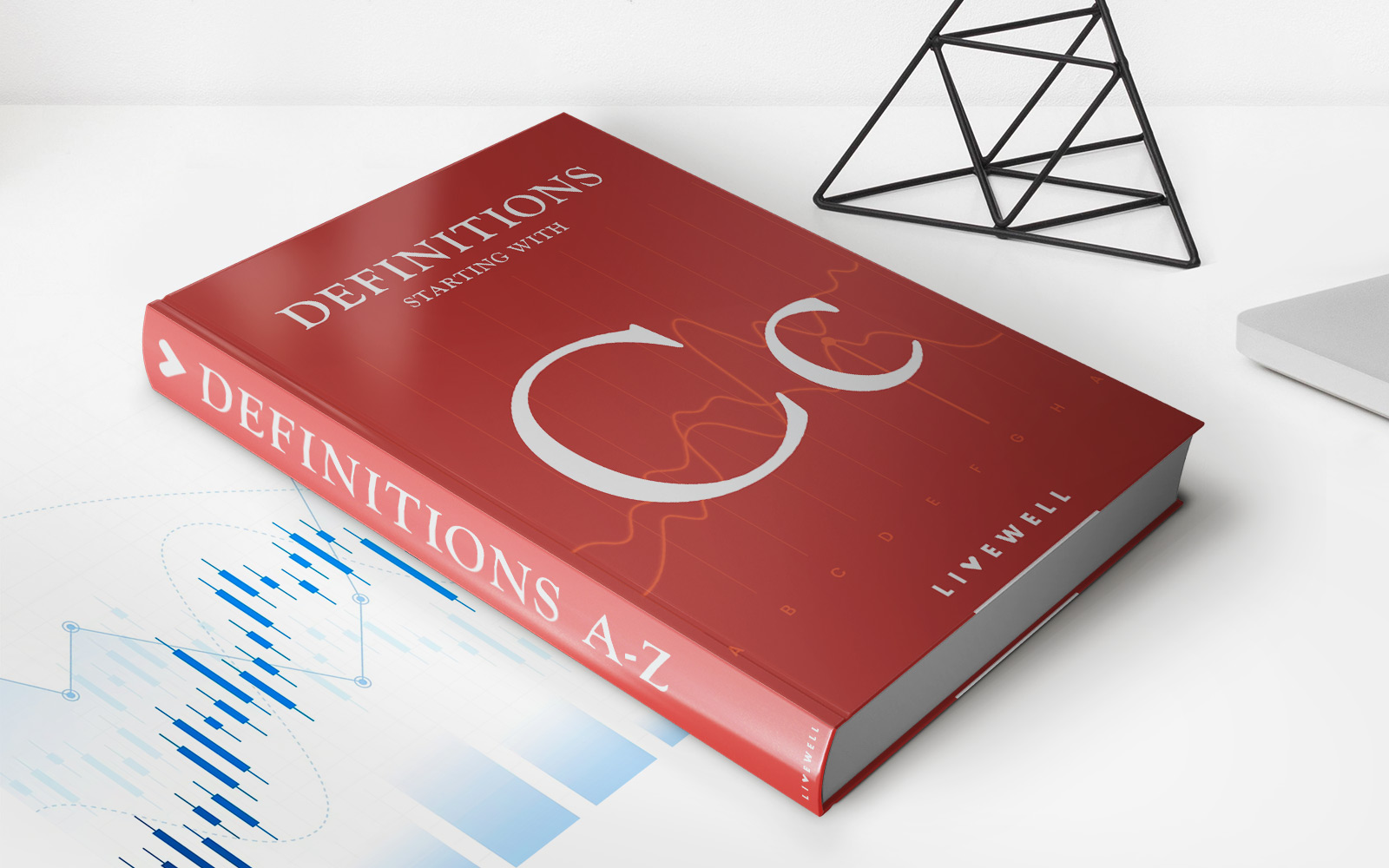

Finance
How Does Student Loan Interest Affect Taxes?
Modified: February 21, 2024
Learn how student loan interest impacts your taxes and get expert advice on managing your finances effectively. Understand the tax implications of student loan interest.
(Many of the links in this article redirect to a specific reviewed product. Your purchase of these products through affiliate links helps to generate commission for LiveWell, at no extra cost. Learn more)
Table of Contents
Introduction
Welcome to the complex world of student loans and taxes. As a student or recent graduate, you’re likely navigating the challenges of repaying student loans while also trying to understand how they impact your taxes. The good news is that the interest you pay on your student loans can have a significant impact on your tax return. In this comprehensive guide, we’ll delve into the intricate relationship between student loan interest and taxes, helping you understand the implications and potential benefits.
Many individuals are unaware of the potential tax advantages associated with student loan interest. By gaining a clear understanding of how student loan interest affects your taxes, you can make informed decisions that may positively impact your financial situation. Whether you’re a recent graduate, a current student, or a parent navigating the complexities of student loans, this guide will provide valuable insights into leveraging student loan interest to your advantage when tax season rolls around.
Throughout this article, we’ll explore the process of deducting student loan interest, the limitations and eligibility criteria, and the essential steps for reporting student loan interest on your taxes. By the end, you’ll have a comprehensive understanding of how student loan interest intertwines with the tax system, empowering you to make informed financial decisions and potentially maximize your tax benefits.
Understanding Student Loan Interest
Before delving into the tax implications, it’s crucial to grasp the concept of student loan interest. When you borrow money to fund your education, whether through federal or private student loans, the lender typically charges interest on the amount borrowed. This interest is essentially the cost of borrowing and is calculated as a percentage of the loan balance.
Student loan interest can be categorized into two primary types: subsidized and unsubsidized. Subsidized loans are offered to undergraduate students with demonstrated financial need, and the federal government pays the interest while the student is in school, during the grace period after leaving school, and during deferment periods. On the other hand, unsubsidized loans are available to both undergraduate and graduate students, regardless of financial need, and the borrower is responsible for all interest payments.
Understanding the terms and conditions of your student loans, including the specific interest rates and whether the interest is subsidized or unsubsidized, is essential for managing your finances effectively. Additionally, comprehending the distinction between subsidized and unsubsidized loans can help you anticipate the long-term financial implications of your borrowing.
It’s important to note that the interest accrued on student loans can significantly contribute to the total amount repaid over the life of the loan. Therefore, being mindful of the interest rates, repayment plans, and the overall impact of interest on the total repayment amount is crucial for effectively managing your student loan debt.
Deducting Student Loan Interest
One of the key benefits for borrowers is the ability to deduct student loan interest on their federal income tax returns, potentially reducing their taxable income. This deduction can lead to a lower tax bill or a higher tax refund, providing financial relief for individuals repaying student loans.
To qualify for the student loan interest deduction, certain criteria must be met. Firstly, the loan must have been taken out for qualified education expenses, including tuition, fees, books, supplies, and other necessary educational expenses. The loan proceeds must have been used for these specific purposes to be eligible for the deduction.
Another essential requirement is that the borrower must be legally obligated to repay the loan. In most cases, this obligation is met, as student loans typically require the borrower to sign a promissory note, outlining the terms and conditions of the loan and the repayment schedule.
It’s important to note that the deduction for student loan interest is an “above-the-line” deduction, which means that you can claim it even if you don’t itemize your deductions. This is particularly advantageous for individuals who take the standard deduction rather than itemizing their deductions on Schedule A of Form 1040.
As of the 2021 tax year, eligible taxpayers can deduct up to $2,500 of student loan interest paid during the year. However, the actual amount of the deduction is subject to income limitations. The deduction begins to phase out for single filers with a modified adjusted gross income (MAGI) of $70,000 and is completely phased out at $85,000. For married couples filing jointly, the phaseout range is $140,000 to $170,000.
By taking advantage of the student loan interest deduction, borrowers can potentially reduce their taxable income, leading to a lower tax liability or a higher tax refund. This can provide much-needed financial relief, especially for individuals with substantial student loan debt.
Limitations and Eligibility
While the student loan interest deduction offers valuable tax benefits, it’s essential to be aware of the limitations and eligibility criteria associated with this deduction. Understanding these factors can help borrowers maximize the potential tax savings while avoiding common pitfalls.
Eligibility for the student loan interest deduction is contingent upon several key factors. Firstly, the loan must have been used exclusively for qualified education expenses, as defined by the IRS. These expenses typically include tuition, fees, books, supplies, and other essential educational costs. It’s crucial to ensure that the loan proceeds were utilized for these specific purposes to qualify for the deduction.
Additionally, the deduction is available to individuals who are legally obligated to repay a qualified student loan. This requirement is generally met when borrowers sign a promissory note, formalizing their obligation to repay the loan according to the terms and conditions outlined by the lender.
Income limitations also play a significant role in determining eligibility for the student loan interest deduction. As of the 2021 tax year, the deduction begins to phase out for single filers with a modified adjusted gross income (MAGI) of $70,000 and is completely phased out at $85,000. For married couples filing jointly, the phaseout range is $140,000 to $170,000. It’s crucial for taxpayers to assess their income levels and understand how it may impact their eligibility for this deduction.
Furthermore, the type of filing status chosen can affect the availability of the student loan interest deduction. Married individuals filing separately are not eligible for this deduction, potentially limiting the tax benefits for couples who choose to file separate returns.
Understanding the limitations and eligibility criteria is essential for maximizing the potential tax benefits associated with student loan interest. By meeting the necessary requirements and staying informed about income thresholds, borrowers can leverage this deduction to alleviate the financial burden of student loan repayment.
Reporting Student Loan Interest on Your Taxes
When it comes to reporting student loan interest on your taxes, accuracy and adherence to IRS guidelines are paramount. The process involves ensuring that you have the necessary documentation and understanding the specific steps for claiming the student loan interest deduction on your tax return.
First and foremost, you should receive Form 1098-E from each of your student loan servicers if you paid $600 or more in interest during the tax year. This form outlines the amount of interest paid on your student loans, providing essential information for reporting the deduction on your tax return. It’s crucial to review the form for accuracy and retain it for your records.
When preparing your tax return, you will report the student loan interest deduction on Form 1040 or Form 1040A. The deduction is an adjustment to income, also known as an “above-the-line” deduction, which means it can be claimed even if you don’t itemize your deductions.
On Form 1040, the student loan interest deduction is reported on line 20, while on Form 1040A, it is reported on line 33. You will enter the amount of student loan interest you are claiming, up to the maximum allowable deduction of $2,500. It’s essential to follow the instructions provided with the tax forms to accurately report the deduction and avoid errors that could potentially lead to processing delays or IRS inquiries.
As part of the reporting process, it’s important to ensure that you meet all the eligibility criteria and income limitations associated with the student loan interest deduction. Failing to adhere to these requirements could result in the disqualification of the deduction or, in more severe cases, potential penalties from the IRS.
Additionally, if you are using tax preparation software or engaging the services of a professional tax preparer, be sure to provide them with all relevant documentation, including Form 1098-E and any additional records related to your student loans. This will facilitate the accurate reporting of the deduction and help maximize your potential tax savings.
By diligently reporting student loan interest on your taxes and leveraging the available deduction, you can potentially lower your taxable income and alleviate some of the financial burden associated with student loan repayment.
Conclusion
Understanding the intersection of student loan interest and taxes is crucial for individuals managing student loan debt. The ability to deduct student loan interest on your tax return presents a valuable opportunity to potentially lower your taxable income and alleviate the financial impact of repaying student loans.
By comprehending the intricacies of student loan interest, including the types of loans, interest accrual, and repayment terms, borrowers can make informed decisions that may positively impact their tax situation. The distinction between subsidized and unsubsidized loans, as well as the implications of interest on the total repayment amount, is essential for effective financial planning.
Moreover, being aware of the eligibility criteria, income limitations, and reporting requirements for the student loan interest deduction empowers individuals to maximize their potential tax savings while ensuring compliance with IRS regulations. The availability of the deduction as an “above-the-line” adjustment provides added flexibility for taxpayers, allowing them to claim the benefit even if they don’t itemize their deductions.
As tax season approaches, ensuring that you have received Form 1098-E from your student loan servicers and accurately reporting the student loan interest deduction on your tax return is paramount. This entails understanding the specific lines on Form 1040 or Form 1040A where the deduction should be reported and adhering to IRS guidelines to avoid potential errors or complications.
In conclusion, the relationship between student loan interest and taxes offers a potential avenue for financial relief for borrowers. By leveraging the available deduction and staying informed about the nuances of student loan interest, individuals can navigate the complexities of student loan repayment while potentially maximizing their tax benefits. As you manage your student loans and prepare for tax season, a clear understanding of the implications of student loan interest on your taxes can contribute to sound financial decision-making and long-term financial stability.














